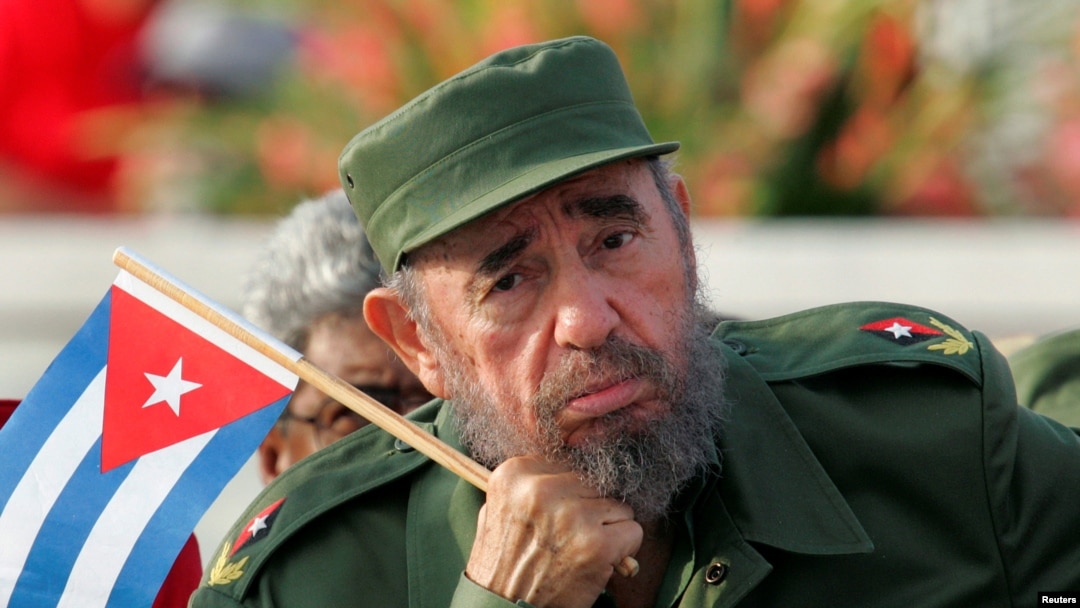Fidel Castro, the man who led Cuba for nearly a half century has died at the age of 90, his brother, President Raul Castro, announced on national television.
"The commander in chief of the Cuban revolution died at 22:29 hours" on November 25, the president announced on national television.
The former revolutionary leader will be cremated on November 26 in accordance with his wishes, Castro said.
The son of wealthy, Spanish-born landowners, Fidel Alejandro Castro Ruz was born on August 13, 1926. He received a strict Roman Catholic education under Jesuit priests.
Their austerity may have influenced Castro, who said he was shocked by the stark contrast between his family’s wealth and the poverty of those around them.
Embracing Marxism-Leninism after law school in Havana, Castro in the early 1950s began organizing a militia in a bid to oust pro-American President Fulgenico Batista.
Under Batista's regime, known for its corruption and brutality, Havana was at the time a playground for America's rich -- famous for its nightlife and music.
But the fun ended on January 1, 1959. After failing six years previously in a bid to spark a popular revolt, Castro's forces finally ousted Batista, storming into Havana to the cheers of thousands of supporters.
Just 30 days after entering Havana, Castro embarked on a victory tour of the United States.
During the visit, which would be his last to the United States, Castro portrayed himself as a humble man without ambition.
"But I have said that I have no ambition at all," he claimed. "I feel myself sincerely, I do not have ambition for money, power, nothing -- only to serve my country."
Little did anyone know that he would go on to lead his nation for nearly half a century.
Missile Crisis
In the year following the revolution, relations between Havana and Washington soured. First, the United States suspended Cuban sugar imports after Havana nationalized a U.S.-owned oil refinery. Washington began a partial economic embargo of Cuba, followed by a severing of diplomatic ties.
But Castro was not to be deterred. Fortified by deepening political and economic ties with Moscow, Castro's forces soundly defeated a U.S.-backed invasion by Cuban exiles in the Bay of Pigs in April 1961.
ALSO READ: Fidel Castro Dead At 90
A full economic embargo of Cuba soon followed. But it was the events of October 1962 -- the so-called Cuban missile crisis -- that would shake the world.
Speaking at the United Nations, U.S. Ambassador Adlai Stevenson demanded to know from Valerian Zorin, his Soviet counterpart, whether Moscow was deploying nuclear-tipped missiles in Cuba that could hit U.S. cities.
"All right, sir, let me ask you one simple question," he said. "Do you, Ambassador Zorin, deny that the USSR has placed, and is placing, medium and intermediate range missiles in sites in Cuba? Yes or no? Don't wait for the translation! Yes or no!"
Zorin refused to reply, much to Stevenson's chagrin, but Russian missiles had indeed been deployed on the Caribbean island.
Taped records of conversations involving U.S. President John F. Kennedy show that the world has perhaps never been closer to a nuclear confrontation.
But after a U.S. naval blockade of Cuba, Soviet leader Nikita Khrushchev relented. The missiles were removed.
As America's No. 1 enemy, Castro was reportedly the target of hundreds of assassination attempts. One was even said to have included a cigar laced with explosives.
Progress At A Price
Castro went on to attain iconic status in Latin America, where Cuba's excellent medical system, 98 percent literacy rate, and low infant mortality were the region's best.
Yet progress came at a price, often paid for by the Soviet Union, which at its demise in 1991 was giving Havana some $6 billion a year in aid.
With that money cut off, and the country still under an intense economic blockade, tens of thousands of Cubans sought to reach the United States aboard makeshift boats. Many of them died.
Over the years, Castro’s regime was also regularly criticized by human rights groups and Western governments for persecuting dissidents and jailing them without trial.
Fidel Castro: A Life In Pictures
With the collapse of the U.S.S.R., Cuba was fighting for survival, as Castro acknowledged in a 1992 speech when he said the country was being "asked again for an extraordinary international mission. Save the Cuban revolution! Save Socialism in Cuba!"
For some years now, that revolution has been in the hands of Castro's younger brother, Raul, who was unanimously chosen as president by Cuba’s National Assembly in February, 2008.
Fidel Castro’s younger brother by four years, Raul had been acting president since 2006, when Fidel underwent intestinal surgery. Like Fidel, he was a revolutionary, serving as a rebel commander in the 1950s. After his brother became president, Raul rose to prominence in the regime. He was minister of the armed forces from 1959 to 2008.
As president, he has introduced economic reforms in the area of consumer choices, wages, and food production.
In December 2014, Raul Castro agreed to reestablish diplomatic ties and end decades of hostility with the United States.
Castro lived long enough to see U.S. President Barack Obama visit Cuba earlier this year, the first trip by a U.S. president in 88 years.
He did not met Obama and wrote a scathing column condemning the U.S. president's “honey-coated” words and reminding Cubans of the numerous U.S. efforts to overthrow and weaken Cuba’s Communist government.


